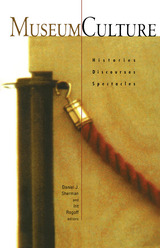
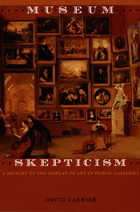
Carrier illuminates the public role of art museums by describing the ways they influence how art is seen: through their architecture, their collections, the narratives they offer museum visitors. He insists that an understanding of the art museum must take into account the roles of collectors, curators, and museum architects. Toward that end, he offers a series of case studies, showing how particular museums and their collections evolved. Among those who figure prominently are Baron Dominique Vivant Denon, the first director of the Louvre; Bernard Berenson, whose connoisseurship helped Isabella Stewart Gardner found her museum in Boston; Ernest Fenollosa, who assembled much of the Asian art collection now in the Museum of Fine Arts, Boston; Albert Barnes, the distinguished collector of modernist painting; and Richard Meier, architect of the J. Paul Getty Center in Los Angeles. Carrier’s learned consideration of what the art museum is and has been provides the basis for understanding the radical transformation of its public role now under way.
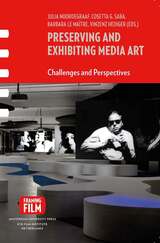
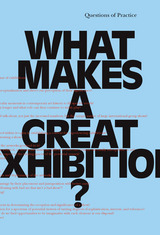
For better or worse, museums are changing from forbidding bastions of rare art into audience-friendly institutions that often specialize in “blockbuster” exhibitions designed to draw crowds. But in the midst of this sea change, one largely unanswered question stands out: “What makes a great exhibition?” Some of the world’s leading curators and art historians try to answer this question here, as they examine the elements of a museum exhibition from every angle.
What Makes a Great Exhibition? investigates the challenges facing American and European contemporary art in particular, exploring such issues as group exhibitions, video and craft, and the ways that architecture influences the nature of the exhibitions under its roof. The distinguished contributors address diverse topics, including Studio Museum in Harlem director Thelma Golden’s examination of ethnically-focused exhibitions; and Robert Storr, director of the 2007 Venice Biennale and formerly of the Museum of Modern Art, on the meaning of “exhibition and “exhibitionmaker.”
A thought-provoking volume on the practice of curatorial work and the mission of modern museums, What Makes A Great Exhibition? will be indispensable reading for all art professionals and scholars working today.
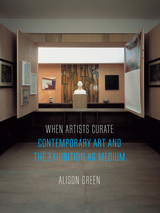
Rather than portraying artist curators as exceptional or rare, Green establishes the fact that artists curate all the time and in all kinds of places: in galleries and in museums, in studios, in borrowed spaces such as shopfronts or industrial buildings, in front rooms and front windows, in zoos or concert halls, on streets and in nature. Seen from the perspective of artists, showing is a part of making art. Once this idea is understood, the story of art starts to look very different. Beautifully illustrated and featuring in-depth explorations of the work of revered artist curators like Daniel Buren, Goshka Macuga, Thomas Hirschhorn, Rosemarie Trockel, Hito Steyerl, Andy Warhol, and Félix González-Torres, When Artists Curate will change the way we think about and look at exhibitions.
READERS
Browse our collection.
PUBLISHERS
See BiblioVault's publisher services.
STUDENT SERVICES
Files for college accessibility offices.
UChicago Accessibility Resources
home | accessibility | search | about | contact us
BiblioVault ® 2001 - 2024
The University of Chicago Press









